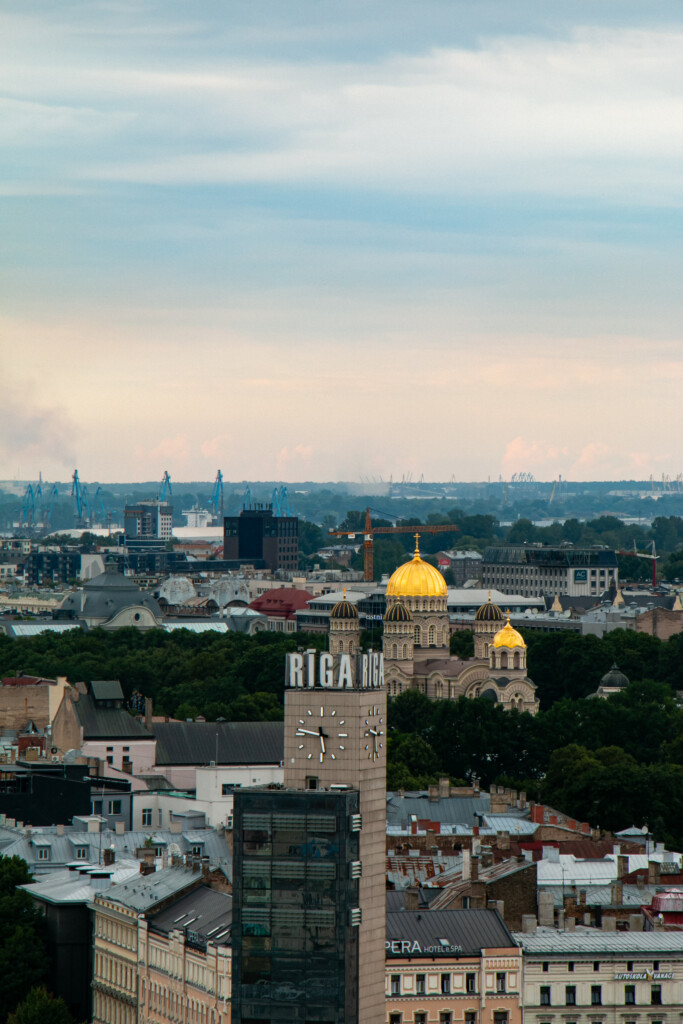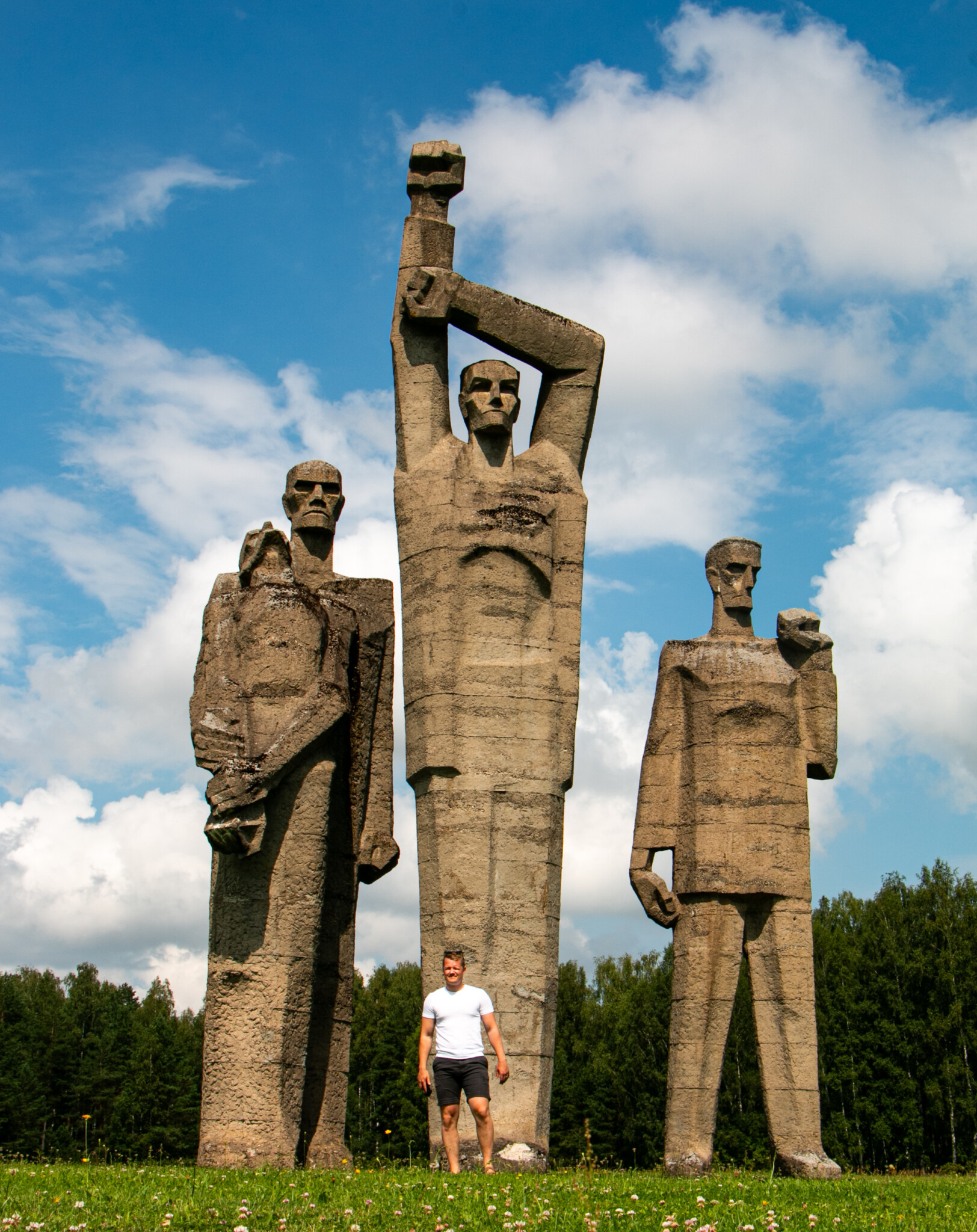Latvia Travel Guide
Please note that some of the links on our website are affiliate links. This means if you click on these links and make a purchase, we may receive a small commission at no extra cost to you. These commissions help us maintain and grow our blog.

Welcome to Latvia! Situated on the shores of the Baltic Sea, Latvia was once part of the Soviet Union but is now an independent and often overlooked travel destination compared to its more popular Scandinavian neighbors like Sweden and Denmark. For instance, my hometown of Stockholm receives roughly ten times as many tourists as Riga! However, Latvia and its capital, Riga, have much to offer travelers, including stunning architectural styles, beautiful natural landscapes, and long, pristine beaches.
In this guide I will break down everything that should know before traveling to Latvia.
A Quick History Lesson
To better appreciate a visit to a city, it’s helpful to start with its history. In the 16th century, Latvia’s territory was divided between Poland and Sweden, with Riga flourishing under Swedish rule. Following the Great Northern War in the early 18th century, Latvia became part of the Russian Empire. The 19th century brought industrialization and a rise in Latvian nationalism, sparking cultural revival and calls for autonomy.
Latvia declared independence on November 18, 1918, after World War I and the Russian Revolution. The interwar period brought political and economic progress despite various challenges. However, World War II brought devastating occupations by the Soviet Union in 1940, Nazi Germany in 1941, and the Soviets again in 1944, causing significant loss and repression.
Latvia regained independence on August 21, 1991, following the collapse of the Soviet Union. Since then, it has achieved considerable economic development and international integration, joining the European Union and NATO in 2004.
What Makes Latvia Unique
-
- Riga’s Beautiful Architectural: The Latvian capital of Riga boasts a stunning array of architectural styles, so impressive that Old Town of Riga was recognized as a UNESCO world heritage site back in 1997. Here you’ll find an impressive collection of Art Nouveau buildings, Gothic churches, and medieval structures. It is also the largest collection of Art Nouveau architectural style buildings in the world.
-
- Natural Beauty: Latvia’s landscape is surprisingly diverse, with long-stretching sandy beaches, dense forests, serene lakes, and rolling hills. The Gauja National Park, often called the “Switzerland of Latvia,” is a great place to enjoy the Latvian nature with breathtaking views and numerous outdoor activities.
-
- Cultural Richness: Latvia has a lot to offer when it comes to the cultural scene, in particular when it comes to traditional folk music, contemporary art, and lively festivals. The Latvian Song and Dance Festival, held every five years, is an event that you should keep an eye on and attend if you get the chance. It’s a UNESCO-recognized event (recognized as a Masterpiece of the Oral and Intangible Heritage of Humanity) and involves t involves thousands of participants, including choirs, folk dance groups, and orchestras from across the country and Latvian communities abroad. The festival features grand performances, including massed choirs and synchronized dance routines, celebrating the country’s musical and dance traditions.
Top Things to Do
Riga Old Town: Wander through the cobblestone streets of Riga’s Old Town, a UNESCO World Heritage site. Don’t miss the Gothic spires, charming squares, and the iconic House of the Blackheads. The area is also home to numerous museums, art galleries, and vibrant cafes, making it a perfect place to get to know Latvian culture. Latvia is a small country and the capital Riga is perfect to use as a base to explore the country further.
Gauja National Park: Explore Latvia’s largest national park, known for its dense forests, medieval castles, and the Gauja River. The park offers a range of activities such as hiking, biking, and canoeing. Key highlights include the Turaida Museum Reserve, Sigulda Castle, and the Gutmanis Cave, which is the largest cave in the Baltic states.
Jurmala Beach: Jurmala is a popular seaside resort town just a short drive from Riga. The town is known for its long sandy beach, wooden houses, pine forests, and spa resorts. Jurmala is the getaway for many Latvians during the summer months. The beach stretches an impressive 33 kilometers! And offers plenty of space for sunbathing, swimming, and beach sports.
Cesis Castle: Visit the medieval Cesis Castle, located in the picturesque small town of Cesis, about 1 hour and 30 min drive from Riga. The Cesis Castle was built by the Livonian Brothers of the Sword, a military order of German knights, around 1214 and will give you insight into Latvia’s long history under the Livonian Order as well as picturesque views of the surrounding area. Don’t forget to climb the castle tower for panoramic views of the town and surrounding countryside.
Kuldiga: Discover the charming town of Kuldiga, home to the widest waterfall in Europe, Venta Rapid. Kuldiga is also one of the three UNESCO World Heritage Sites in Latvia. The town is known for its well-preserved wooden buildings and the ancient brick bridge over the Venta River. Kuldiga’s old town has a unique atmosphere, with narrow streets and cozy cafes that make it a great place to explore.
Travel Costs
Traveling in Latvia is relatively affordable, especially in comparison with its Scandinavian neighbors. Here’s a breakdown of daily costs for different budgets:
Accommodation
Latvia offers a range of accommodation options to suit all budgets. For budget travelers, hostels and budget guesthouses cost around €20-30 per night, especially in major cities like Riga. These provide basic amenities like shared bathrooms and free Wi-Fi. Mid-range accommodations, costing €50-100, include comfortable hotels and boutique guesthouses with private bathrooms and breakfast. If you are looking for a more luxurious experience, be prepared spend €100+ per night and above, which is still reasonable in comparison with many other European countries.
Prices for accommodation in Riga can be higher during peak tourist seasons, such as summer (June to August) and around major events like the Riga Christmas Market in December. Booking in advance can will help you secure a better deal.
Food
Eating out in Latvia is generally affordable. Budget options, like street food and local cafes, cost around €5-10 per meal. For a mid-range dining options, expect to pay €15-30 for a meal, including an appetizer, main course, and a drink. Fine dining can cost €50 or more per person. In general, the old town of Riga is overpriced, so make sure to dine elsewhere to keep the costs down.
Transportation
Getting around Latvia is easy and budget-friendly. There is no metro system in Riga or anywhere else in Latvia, instead buses are your best mode of transportation within cities. Public transport within cities costs about €1-2 per ride, while intercity travel by train or bus ranges from €5-15. Car rentals cost are cheap and will cost you around €20-30 per day, with fuel priced at approximately €1.60 per liter.
Activities
Latvia offers plenty of low-cost activities. Museum entry fees are typically €5-10, and exploring natural parks, beaches, and historical sites is often free. Mid-range activities, such as guided tours and boat trips, cost between €10-30. More exclusive experiences like private tours and hot air balloon rides start at around €50.
This overview helps you plan your budget and make the most of your trip to Latvia, considering both your spending preferences and the seasonal variations in costs. For a mid-range traveler, I would expect to pay around €70 a day for food and activities (not including accommodation).
| Expense | Budget | Mid-Range | Luxury |
|---|---|---|---|
| Accommodation | €20-30 (Hostels) | €50-80 (Hotels) | €100+ (Luxury Hotels) |
| Food | €5-10 (Local Cafes) | €15-30 (Mid-Range Restaurants) | €50+ (Fine Dining) |
| Transportation | €2-5 (Public Transport) | €10-20 (Car Rental) | €50+ (Private Transfers) |
| Activities | €0-10 (Museums) | €10-30 (Group Tours) | €50+ (Exclusive Experiences) |
Where to Stay
Riga
When it comes to the question of accommodation, my choice is nearly always the best location, especially when visiting a city without having a car.
For a central location in Riga, stay in the Old Town or nearby neighborhoods like the Art Nouveau District. This might be the most touristy area of Riga but it will give the most convenience in terms of proximity to all attractions.
Hotel Recommendations:
-
- Grand Poet Hotel by Semarah: A luxurious hotel with a spa, located near the Old Town.
-
- Rixwell Hotel Konventa Seta: A mid-range option with comfortable rooms and a great location in the heart of the Old Town.
-
- Tree House Hostel: A budget-friendly hostel offering clean and cozy dorms and private rooms.
Jurmala
In Jurmala, opt for beachside hotels or charming guesthouses. Jurmala offers a range of accommodations from budget-friendly guesthouses to luxurious spa resorts. Staying near the beach allows you to enjoy the seaside atmosphere and easy access to the town’s attractions.
Hotel Recommendations
-
- Baltic Beach Hotel & SPA: A luxury hotel with direct access to the beach and extensive spa facilities.
-
- Villa Joma: A charming mid-range guesthouse located close to the beach and main pedestrian street.
-
- Sunset Hotel: A budget option with simple, comfortable rooms and a convenient location near the beach.
Cesis
Stay in historic inns or cozy B&Bs close to the castle and nature trails. Cesis is a great base for exploring Gauja National Park. Many accommodations offer beautiful views of the park and easy access to hiking and biking trails.
Hotel Recommendations
-
- Hotel Cesis: A mid-range hotel offering comfortable rooms and a central location.
-
- Kārļamuiža Country Hotel: A charming country hotel located in a historic building, perfect if you want to be close to nature.
-
- Hotel Katrina: A budget-friendly option with clean and cozy rooms in the heart of Cesis.
Liepaja
Choose from a range of hotels near the seaside or in the city center. Liepaja is known for its music and arts scene, and as always staying in the city center puts you close to cultural attractions and lively nightlife.
Hotel Recommendations
-
- Promenade Hotel: A luxury hotel with elegant rooms and a great location by the canal.
-
- Hotel Kolumbs: A mid-range hotel offering comfortable rooms and modern amenities.
-
- Hotel Fontaine: A quirky, budget-friendly hotel with a unique design and central location.
When To Go
The best time to visit Latvia in my opinion is the beginning of September or during Christmas. In the beginning of September you will avoid many of the crowds, but still enjoy the warm weather and lower prices for accommodation. Christmas is also a very cozy time to visit Riga, due to the large Christmas market in Riga being a highlight.
Below you will find a description of what each season offers.
Spring (March to May): Mild temperatures and blooming landscapes make this a great time for sightseeing and outdoor activities. Spring is less crowded than summer, offering a more peaceful experience. It’s a perfect time to visit parks and gardens as they come to life with colorful flowers.
Summer (June to August): The best time for beachgoers and festival enthusiasts, with warm weather and long days. Summer is the peak tourist season in Latvia, with numerous festivals, concerts, and events taking place. The coastal areas and national parks are especially popular during this time.
Autumn (September to November): Enjoy colorful foliage and fewer crowds. Autumn is a beautiful time to visit Latvia’s forests and parks as they are transformed by vibrant fall colors. It’s also harvest season, so you can enjoy fresh local produce and seasonal dishes.
Winter (December to February): A magical time with Christmas markets and opportunities for winter sports. Winter in Latvia is perfect for those who enjoy snow-covered landscapes and festive activities. Riga’s Christmas market is a highlight, offering traditional crafts, food, and drinks.
Safety
Latvia is generally a safe country for travelers and you should take ordinary precautions when travelling here. Here are a few tips to keep in mind:
-
- Stay Aware: Be cautious of your surroundings, especially in crowded tourist areas. Pickpocketing can occur in busy places, so keep an eye on your belongings.
-
- Drinking Water: Tap water is safe to drink, but if you prefer, bottled water is widely available.
-
- Emergency Numbers: Familiarize yourself with local emergency numbers (Police: 112, Medical: 113). In case of an emergency, these numbers can be dialed from any phone and operators can assist in multiple languages.
Travel Resources
Skyscanner – Skyscanner is my top choice for finding flights. It checks small websites and budget airlines that bigger search engines often miss. It’s the best place to begin your search.
Booking.com – My favorite site for booking accommodation anywhere I go. Booking.com has the most accommodation options and to the best price.
Rentalcars -I highly recommend renting a car when exploring new places for more freedom and the chance to see more. Rentalcars.com is excellent, offering cars worldwide with top-notch customer service. I suggest using their Excess Waiver, which covers your excess cost in case of a collision and is usually cheaper than buying directly from the rental company. It has always worked great for me.
Related Blog Posts About Latvia
This site uses Akismet to reduce spam. Learn how your comment data is processed.


Leave a Reply